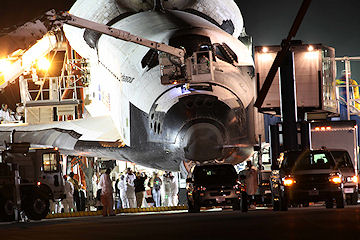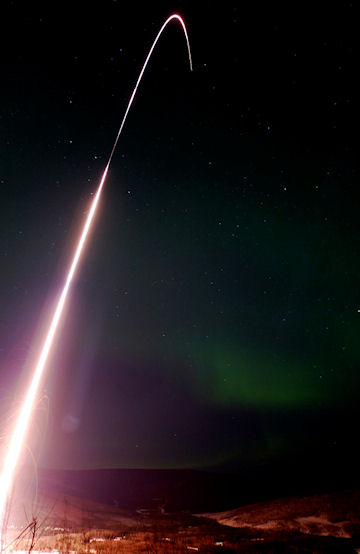NEW AND IMPROVED: Turn your iPhone or iPod into a field-tested global satellite tracker. The Satellite Flybys app now works in all countries. | | | GREAT FILAMENT: The Solar and Heliospheric Observatory (SOHO) is tracking an enormous magnetic filament on the sun. It stretches more than one million kilometers from end to end, which makes it an easy target for backyard solar telescopes. Readers with iPhones can inspect the filament in 3D. (Hint: In the app, tap the "Wavelengths" tab and select the orange sun.) BEAUTIFUL ENDEAVOUR: Shuttle launches have a reputation for great beauty. The view after a landing isn't bad either. Dr. Mark Staples sends this picture from the runway at Kennedy Space Center just after Endeavour returned to Earth on Sunday night: 
"I am part of the medical team of paramedics, decontamination specialists, firemen, nurses and physicians on hand to assist the astronauts and others in case of disaster," says Staples. "We're always glad we are not needed and thank the tremendous shuttle work force and team and crew for a job well done." Take a look at this shot. "That's a view you only want to see on a runway!" says Staples. The next shuttle mission to the International Space Station is just around the corner. If all goes according to plan, Discovery will blast off on April 5th at 6:27 am EDT. The pre-dawn launch should be spectacular--and the view from the runway when Discovery returns 13 days later won't be bad either. Stay tuned for coverage. AURORAL ROAR: Listen to this. The sounds you just heard came from the loudspeaker of a radio receiver tuned to 2.7 MHz during a display of Northern Lights. "We call it 'auroral roar'," says Prof. Jim LaBelle of Dartmouth College. "It's a natural radio emission caused by a cyclotron resonance between auroral electrons and plasma waves in Earth's ionosphere." On Feb. 16th, LaBelle and colleagues launched a Black Brant XII sounding rocket from the Poker Flat Research Range in Alaska to study the process in action: 
Dartmouth graduate student Micah Dombrowski took the picture. "We flew into some of the best auroras seen in years," he says. The mission, named "CHARM II," short for Correlation of High-Frequencies and Auroral Roar Measurements, is a collaboration between Dartmouth College, the University of Iowa, and the French National Center for Scientific Research. It aims to decipher the mysteries of auroral roar and related phenomena "using the ionosphere as a natural laboratory for studying electron beam-plasma interactions," says Labelle. "Preliminary inspection of the data says that the mission was a great success," adds Dombrowski. "Now I have a lot of data to reduce! Many thanks to the NASA NSROC, NEMS, and PFRR teams--and to Nature for such a great show!" February Northern Lights Gallery
[previous Februarys: 2009, 2008, 2007, 2006, 2004, 2003, 2002] | 
